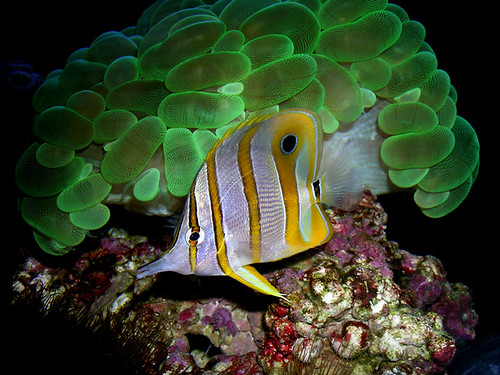Spring continues its inexorable advance in Possum Valley. Monday is here one more time and the opportunity for science talk is here again. Time to brighten your day with selections from science sites around the globe. New discoveries, new takes on old knowledge, and other bits of news are all available for the perusing in today's information world. Today's tidbits include mummy CT-scans show ancient people had clogged arteries, chewing gum helps you concentrate for longer, Earth today is warmer than during 70 to 80 percent of the last 11,300 years, and a new 5-milion-year-old saber toothed cat from Florida is described.
Pull up that comfy chair and grab a spot near the window. There is always plenty of room for everyone. Another session of Dr. Possum's science education, entertainment, and potluck discussion is set to begin.
Featured Stories
Atherosclerosis and clogged arteries may be human conditions related to inflammation and other conditions as well as modern diets.
Overall, the researchers found probable or definite atherosclerosis in 34 percent of the mummies studied, with calcification of arteries more pronounced in the mummies that were older at the time of death. Atherosclerosis was equally common in mummies identified as male or female.
From the department of who would have thought that comes news that
chewing gum helps one to concentrate for longer times.
The study involved 38 participants being split in to two groups. Both groups completed a 30 minute audio task that involved listening to a list of numbers from 1-9 being read out in a random manner. Participants were scored on how accurately and quickly they were able to detect a sequence of odd-even-odd numbers, such as 7-2-1. Participants also completed questionnaires on their mood both before and after the task.
The results showed that participants who chewed gum had quicker reaction times and more accurate results than the participants who didn’t chew gum. This was especially the case towards the latter parts of the task.
As climate change science continues to improve with time more and more data arrives. This time a reconstruction of past climate shows
today's Earth is warmer than most of the last several centuries.
Using data from 73 sites around the world, scientists have been able to reconstruct Earth’s temperature history back to the end of the last Ice Age, revealing that the planet today is warmer than it has been during 70 to 80 percent of the time over the last 11,300 years.
Of even more concern are projections of global temperature for the year 2100, when virtually every climate model evaluated by the Intergovernmental Panel on Climate Change (IPCC) shows that temperatures will exceed the warmest temperatures during that 11,300-year period known as the Holocene – under all plausible greenhouse gas emission scenarios.
A
new species of saber-toothed cat suggests the species originated in North America rather than the Old World as thought in the past.
(Researchers) used comparative analysis of saber-toothed cat anatomy to help determine the animal’s taxonomy. The analysis was primarily based on structure of the animal’s lower jaw and teeth, smaller than the Smilodon and about the size of a modern Florida panther.
...
Originally misidentified as a member of the genus Megantereon in the early 1980s, Rhizosmilodon is instead the sister taxon to Megantereon and Smilodon, and the oldest of the group. These three cats are in the same tribe — meaning they are more closely related than a family or subfamily — and are often called as saber-toothed cats because of their long canine teeth...
Knucklehead's Photo of the Week
Copperband Butterfly fish
Green Bubble coral background

©Knucklehead, all rights reserved, presented by permission. Click on the image to see more in the series.
Other Worthy Stories of the Week
Atmospheric electricity affects cloud height
Planetary Data System releases MESSENGER data from third Mercury solar day
Significant reduction in temperature and vegetation seasonality over northern latitudes
Extremely rare triple quasar found
Blue bursts of hot young stars captured by Hubble
A new cryptic spider species from Africa
Quantum refrigerator offers extreme cooling and convenience
Urban noise leads to more songbird diversity
Hidden rivers revealed beneath the Greenland ice sheet
Why wind is the driving force on Mars
Strange creature provides crucial missing link
New technique creates stronger, lightweight magnesium alloys
Distant planetary system is super-sized solar system
Social bees mark dangerous flowers with chemical signals
Dinosaur era climate change study suggests turtles died out as a result of lost wetlands
Genome of fungus that causes Dutch elm disease mapped
American bullfrogs eat almost anything
For even more science news:
General Science Collectors:
Alpha-Galileo
BBC News Science and Environment
Eureka Science News
LiveScience
New Scientist
PhysOrg.com
SciDev.net
Science/AAAS
Science Alert
Science Centric
Science Daily
Scientific American
Space Daily
Blogs:
All-GeoGeology and Earth science
Cantauri Dreams space exploration
Deep Sea News marine biology
List of Geoscience Blogs
Science20.com
Science Blogs
Space Review
Scientific Blogging.
Space.com
Techonology Review
Tetrapod Zoology vertebrate paleontology
Wired News
Science RSS Feed: Medworm
The Skeptics Guide to the Universe--a combination of hard science and debunking crap
At Daily Kos:
This Week in Science by DarkSyde
Overnight News Digest:Science Saturday by Neon Vincent. OND tech Thursday by rfall.
All diaries with the DK GreenRoots Tag.
Astro Kos
SciTech at Dkos.
NASA picture of the day. For more see the NASA image gallery or the Astronomy Picture of the Day Archive

Abell 68, NASA, public domain


